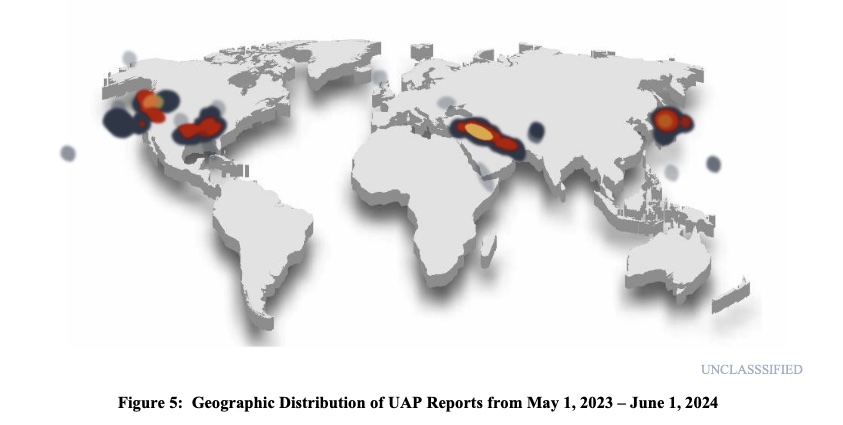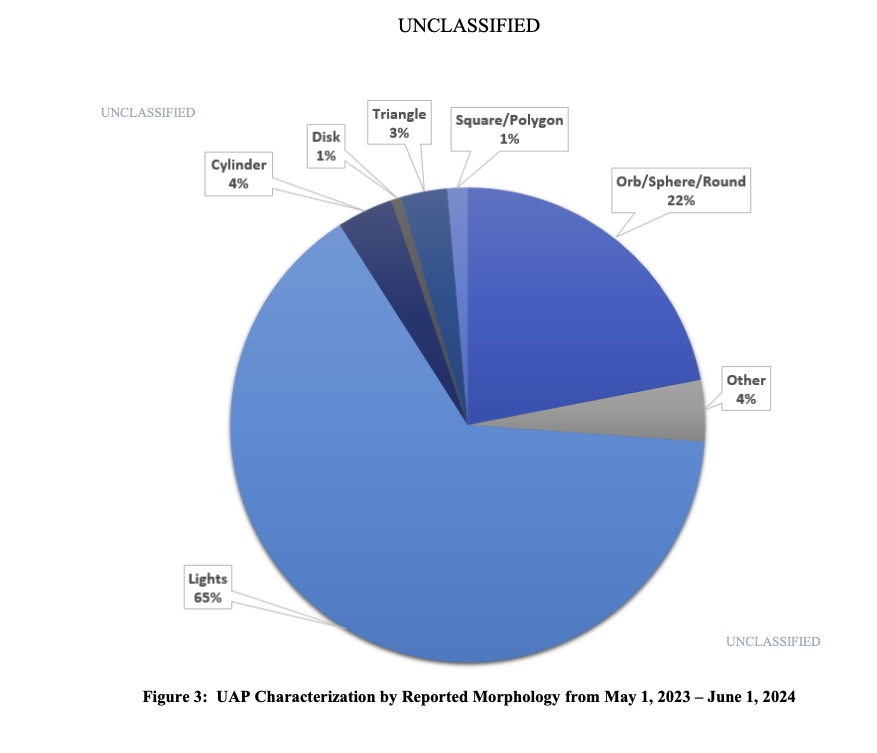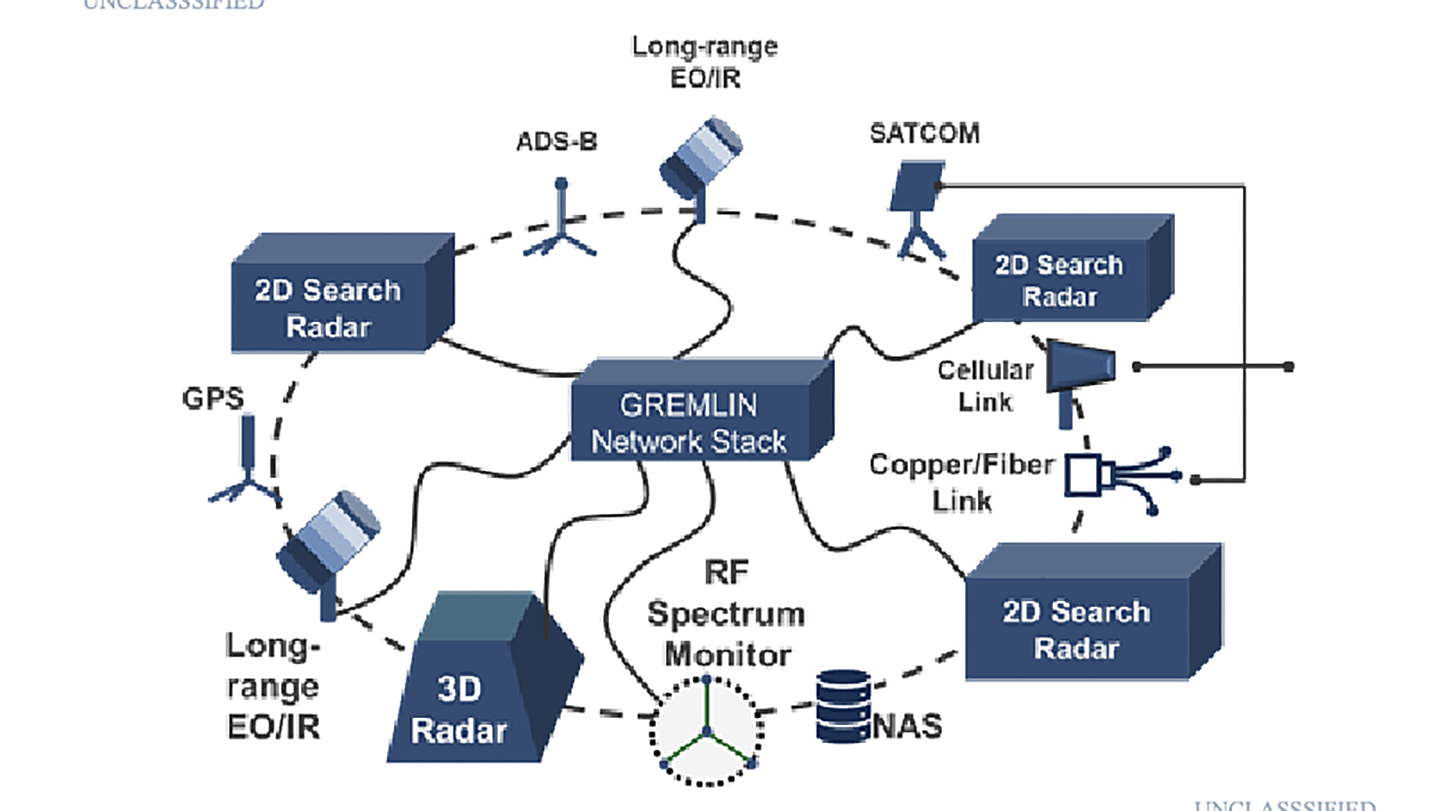The Pentagon provided new details today about how its deployable, readily reconfigurable suite of sensors called GREMLIN works to help set the stage for figuring out what unidentified objects in our skies are and are not, if they appear at all.
In its annual report released on Thursday, the All-domain Anomaly Resolution Office (AARO) shared a graphic that gives us our best look yet at what its GREMLIN system is. It was developed by Georgia Tech Research Institute specifically to help gather data about so-called unidentified anomalous phenomena, or UAPs. That’s the DoD’s new parlance for what used to be called UFOs.
When AARO last discussed GREMLIN back in March, the office said the system was designed to provide “hyperspectral surveillance to try to capture these incidents.” However, no details were given about what kind of sensors were being used to capture data across different areas of the electromagnetic spectrum simultaneously.
Now deployed, GREMLIN includes 2D and 3D radars, long-range electro-optical/infrared sensors, GPS, satellite communications, aircraft tracking systems and radio frequency spectrum monitoring. It all feeds into a central node where the data can be fused to get a better sense of what’s out there. The system is something of an integrated air defense apparatus ‘in a box,’ allowing for multiple sensor types and open-source data to be captured on single targets within its view.
AARO began using GREMLIN “for detecting, tracking, and characterizing UAP,” the report noted. “GREMLIN demonstrated functionality and successfully collected data during a test event in March of 2024. The next step for GREMLIN is a 90-day pattern of life collection at a site of national security.”

One of AARO’s first missions for GREMLIN is to help establish a baseline for what would be considered normal activity, especially because so many UAPs have been reported either through sensors near military installations or by pilots. According to today’s report, nearly half of the 485 UAP sightings reported from May 1, 2023 to June 1, 2024 came from locations near U.S. military assets and sensors at home and abroad. This could be due to the objects being tasked to surveil those locations or due to sensor bias, as these areas are more heavily monitored than others, or more likely a mix of both.
East Asian seas were the hottest spot, providing 100 reports of which AARO resolved 40 as balloons or drones. AARO placed the remaining cases in Active Archive due to insufficient information to facilitate analysis, the report states.
“Right now we have this geographic bias where we are getting reports near the national security sites, but we also have a bias from pilots and other security personnel,” AARO’s new Director Jon Kosloski told reporters today. “So we want to have a better understanding of what normal looks like near those national security sites, and then eventually we’ll be expanding our baseline investigations to other areas in the US to look at what normal looks like away from national security sites.”

Kosloski refused to divulge where GREMLIN is located.
“It’s currently deployed,” he explained. “We’d rather not say exactly where it is, because we want it to be an unbiased test, and don’t want to invite folks to come and do flyovers and test against the system.”
The location was chosen, he added, “because of the environment. We expect there to be a lot of variety in the types of things that we’re going to see. And there have been UAP reports in that general area. And we’re trying to build a baseline.”
Once a pattern of life is established, the report suggested that AARO could use that to go back over some of the 444 cases placed in the Active Archive “because they lacked sufficient data to facilitate analysis.”
All told, AARO found that 49 cases during the reporting period were objects like balloons, birds and drones. “An additional 243 cases were recommended for closure as of June 1, 2024, pending peer review,” the report pointed out. “These cases also resolved to prosaic objects including balloons, birds, UAS, satellites, and aircraft.”
“AARO determined 21 cases merit further analysis by its IC [intelligence community] and science and technology (S&T) partners,” the report acknowledged.

One thing AARO did not find was any indication that UAPs are either extraterrestrial or from an adversary here on Earth.
“AARO has discovered no verifiable evidence of extraterrestrial beings, activity or technology,” Kosloski said. “None of the cases resolved by AARO have pointed to advanced capabilities or breakthrough technologies.”
Just because no evidence has been found of breakthrough technology does not mean the possibility doesn’t exist, he emphasizes.
“There are definitely anomalies,” Kosloski explained. “We have not been able to draw the link to extraterrestrials.”
“We’re not ruling it out,” he added.
Though the report found that there were 18 incidents of drones near U.S. nuclear infrastructure, weapons, and launch sites, Kosloski said there is no indication that either those or reported UAPs belonged to adversaries.
“We have not been able to correlate any UAP activity to adversarial collection activities or advanced technologies,” he posited.
The report also didn’t cover the drone incursions over Langley Air Force Base last December that we were the first to report back in March. You can read more about it in our exclusive story here.
“It was known to be UAV activity, so we were there in a supporting role, but it was not our responsibility to address that,” Kosloski stated.

As it has been since UFOs first burst into the public’s consciousness back in the 1950s, the stigma of reporting them continues to keep people from coming forward to say what they’ve seen. Kosloski said he is concerned that could give adversaries an opening to collect data over sensitive locations. This is something TWZ has long highlighted as a major strategic awareness failure.
Kosloski is “concerned that somebody could use the potential stigma to try and take advantage of that. If there is a stigma associated with reporting UAP, then that’s an opportunity for the adversary to maybe conduct collection operations and not have folks report on it. But we haven’t seen evidence of that yet.”
In an effort to help diminish the stigma of reporting UAPs, Kosloski said AARO is working with partners in the intelligence community and other government agencies to downgrade the classification ratings of incidents to make them more available to the public. Video of some of the cases AARO has discussed publicly will be released on Nov. 19.
“But there are interesting cases that I – my physics and engineering background and time in the IC – I do not understand, and I don’t know anybody else who understands them,” he said.
“The hope is that we will be able to release as much of that content as we can to the public so that we can get help in resolving them,” Kosloski commented.
More quickly and accurately identifying what some of the objects are is the hope for GREMLIN as well.
AARO has been under heavy ridicule by some proponents of UAP action, with claims that it is part of a coverup and has not executed its duties in good faith. Kosloski has taken over the office from its previous head, Dr. Sean Kirkpatrick, who has repeatedly stood by his office’s investigations and methods.
The release of AARO’s latest report also comes a day after another UAP was held on Capitol Hill, with witnesses making claims that appear at odds with AARO’s past findings, especially in regard to secret UAP recovery programs.
Another congressional hearing on Nov. 19 will put AARO and its latest findings specifically in the spotlight.
Contact the author: howard@thewarzone.com
